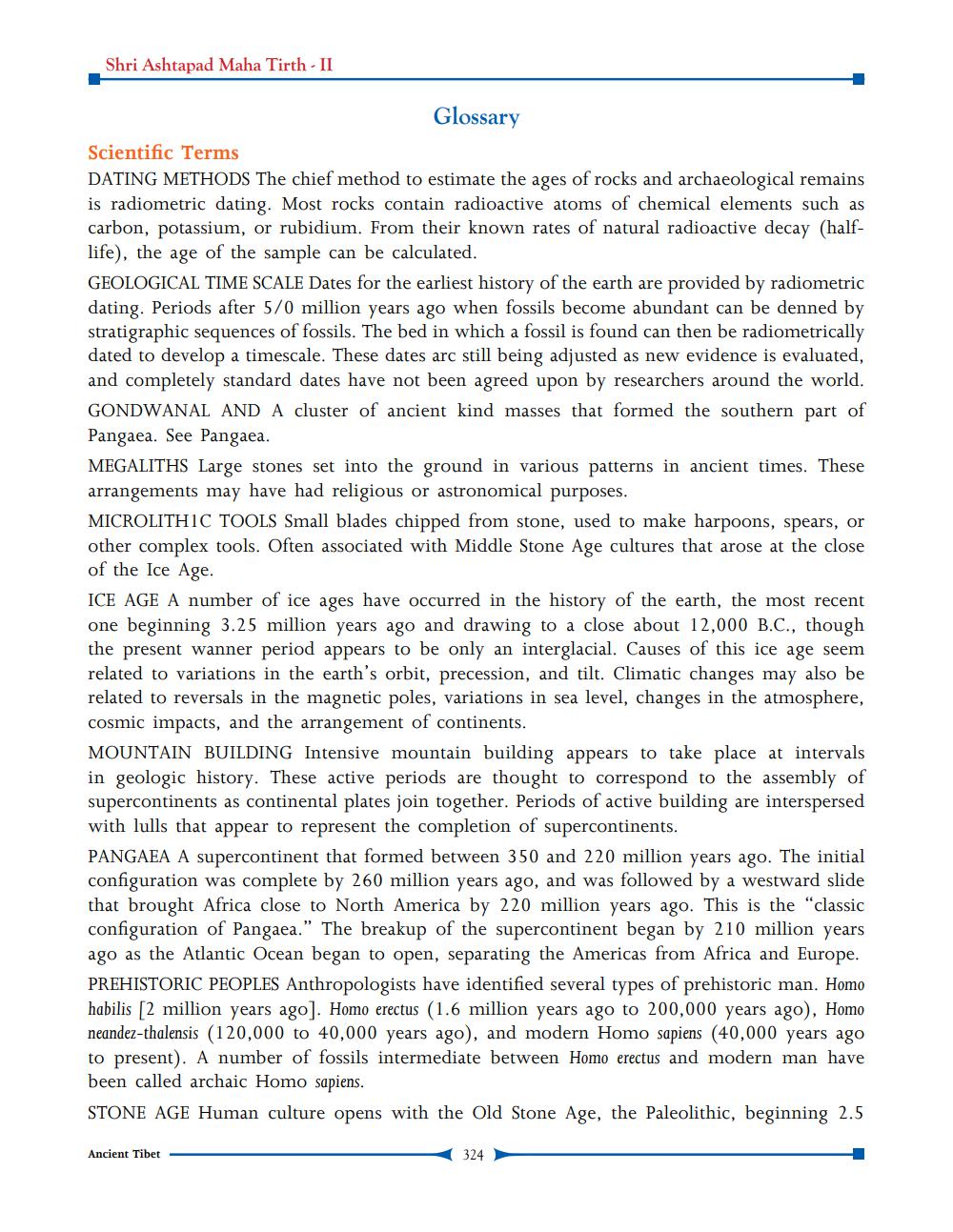________________
Shri Ashtapad Maha Tirth - II
Glossary Scientific Terms DATING METHODS The chief method to estimate the ages of rocks and archaeological remains is radiometric dating. Most rocks contain radioactive atoms of chemical elements such as carbon, potassium, or rubidium. From their known rates of natural radioactive decay (halflife), the age of the sample can be calculated. GEOLOGICAL TIME SCALE Dates for the earliest history of the earth are provided by radiometric dating. Periods after 5/0 million years ago when fossils become abundant can be denned by stratigraphic sequences of fossils. The bed in which a fossil is found can then be radiometrically dated to develop a timescale. These dates arc still being adjusted as new evidence is evaluated, and completely standard dates have not been agreed upon by researchers around the world. GONDWANAL AND A cluster of ancient kind masses that formed the southern part of Pangaea. See Pangaea. MEGALITHS Large stones set into the ground in various patterns in ancient times. These arrangements may have had religious or astronomical purposes. MICROLITHIC TOOLS Small blades chipped from stone, used to make harpoons, spears, or other complex tools. Often associated with Middle Stone Age cultures that arose at the close of the Ice Age. ICE AGE A number of ice ages have occurred in the history of the earth, the most recent one beginning 3.25 million years ago and drawing to a close about 12,000 B.C., though the present wanner period appears to be only an interglacial. Causes of this ice age seem related to variations in the earth's orbit, precession, and tilt. Climatic changes may also be related to reversals in the magnetic poles, variations in sea level, changes in the atmosphere, cosmic impacts, and the arrangement of continents. MOUNTAIN BUILDING Intensive mountain building appears to take place at intervals in geologic history. These active periods are thought to correspond to the assembly of supercontinents as continental plates join together. Periods of active building are interspersed with lulls that appear to represent the completion of supercontinents. PANGAEA A supercontinent that formed between 350 and 220 million years ago. The initial configuration was complete by 260 million years ago, and was followed by a westward slide that brought Africa close to North America by 220 million years ago. This is the "classic configuration of Pangaea." The breakup of the supercontinent began by 210 million years ago as the Atlantic Ocean began to open, separating the Americas from Africa and Europe. PREHISTORIC PEOPLES Anthropologists have identified several types of prehistoric man. Homo habilis [2 million years ago). Homo erectus (1.6 million years ago to 200,000 years ago), Homo neandez-thalensis (120,000 to 40,000 years ago), and modern Homo sapiens (40,000 years ago to present). A number of fossils intermediate between Homo erectus and modern man have been called archaic Homo sapiens. STONE AGE Human culture opens with the Old Stone Age, the Paleolithic, beginning 2.5
Ancient Tibet
(324




